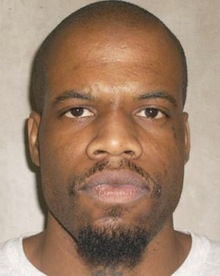Graham Lee Brewer expected Clayton Derrell Lockett to die on Tuesday night. But Brewer, a reporter with The (Oklahoma City, Okla.) Oklahoman, expected to see that death. He did not.
Brewer was one of 12 local reporters present Tuesday night at the Oklahoma State Penitentiary to witness the execution of Lockett in what was supposed to be the state’s first double execution in more than 75 years. It was also the first time using a new lethal drug combination. If Brewer had actually seen Lockett die, it would have been the second execution he’d witnessed.
But he did not. And, he said in a phone interview with Poynter, the murky story of Lockett’s death raises another issue.
“It’s just problematic to me mainly that you really have to fight for transparency,” Brewer said. “Obviously it was perfectly legal for them to close the curtain and not let us see Lockett’s final moments, but in my mind, that kind of defeats the whole purpose of us being there.”
Brewer and the other reporters couldn’t bring their phones with them into the execution chamber viewing room, or even in the car that drove them there. They had to leave their phones in the media center at the prison. Because the reporters were already present, they were let into the viewing room early. While waiting, along with lawyers, a representative for the governor and a few other government officials, the reporters talked about the history of lethal injections, Brewer said, working to put what was about to happen in perspective.
The execution started at 6:23.
“That’s when the curtain raised and you see him on the gurney and the officials standing around him.”
By 6:33, Lockett was unconscious.
At 6:36, he started kicking.
At 6:39, officials closed the curtain.
“Once the curtain closed, it all kind of sunk in just how serious that this was,” Brewer said, “and I think at that moment, we all knew our leads had changed.”
This was Brewer’s, published Tuesday night:
McALESTER — State Corrections Department officials stopped the execution of an inmate Tuesday after a botched lethal injection. Corrections Department Director Robert Patton later addressed members of the media, and announced after a blown vein, Clayton Derrell Lockett suffered a heart attack at 7:06 p.m., and was declared dead.
Reporters in the room spoke up, expressing concern that they couldn’t see what was happening, Brewer said. One by one, representatives with the government were called out of the room, until the only people left were two lawyers and 12 journalists.
“We had no idea what was going on.”
As a journalist, Brewer said, that was extremely frustrating.
“That’s the whole point of me being there,” he said, “to witness the execution.”
Officials with the Oklahoma Department of Corrections have been helpful in getting information to the press, Brewer said. But the execution itself was not conducted in a transparent fashion.
“As far as the media is concerned, we may never really know what happened in that room after the curtain closed.”







